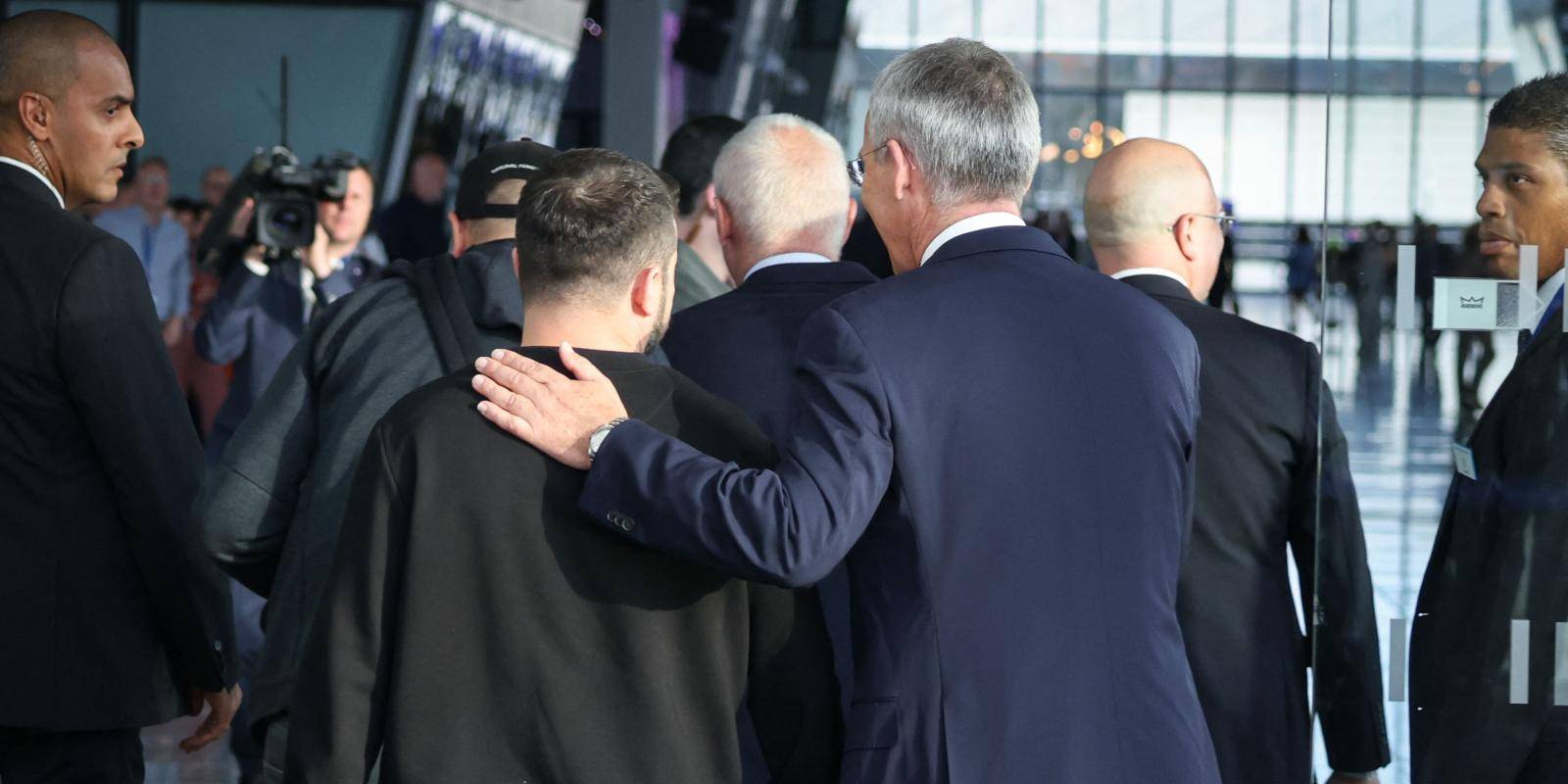NATO defence ministers meet in Brussels this week for their regular autumn session. The recent attacks by Hamas against Israel, the appalling and rising death toll and the Israeli retaliation against Hamas in Gaza will inevitably overshadow this meeting.
US Defense Secretary Lloyd Austin will brief his NATO counterparts on what US intelligence knows about the origin and preparation of the Hamas attacks. There are reports that they were prepared at least a year in advance and with the active involvement of Iran in terms of funding and the supply of weapons and missile components. If proven, Iran’s involvement will be worrying for NATO as Tehran is also providing drones and military hardware to assist Russia in Ukraine. Allies will discuss ways of preventing an escalation and widening of the conflict, especially regarding Hezbollah in Lebanon, Syria and Iran.
Will support for Israel jeopardize support for Ukraine?
Defence ministers will also be seeking assurances from the US that the substantial amount of weaponry now being airlifted to Israel (including vital air defence and anti-missile systems) will not be at the expense of Ukraine as it continues its counteroffensive against Russian occupying forces. There may well be more enthusiasm for supplying Israel than Ukraine in the US Congress – particularly among Republicans in the House of Representatives – but the Pentagon has said that it can supply both countries.
Nevertheless, NATO allies will want to hear from Austin how he sees the way forward, particularly after a recent vote by Congress on a short-term government financing measure stripped out a $6 billion aid package for Ukraine. There are reports from Washington that the Biden administration may try to link funding packages for Israel to further support and weapons supplies to Ukraine, thereby forcing the hand of the House Republicans.
Israel is a long-standing and highly active partner of NATO and there will be many declarations of support for Israel from NATO allies following the strong statement by NATO Secretary General Jens Stoltenberg. Yet some statements may become more nuanced as the Israeli retaliation in Gaza unfolds, particularly when it comes to the need to act proportionately, minimize civilian casualties and avoid a massive humanitarian crisis – if it is not already too late for that.
But NATO has no role in the Israeli-Palestinian conflict and no formal relationship with the Palestinian Authority so the main focus of the defence ministers’ meeting will be support for Ukraine. The original plan was to have a first discussion with the new Ukrainian defence minister, Rustern Umerov, who took up his job in early September after his predecessor and all his deputies were sacked. But the visibility of this meeting – and the stakes – were raised by President Zelenskyy’s decision to make a surprise visit to NATO headquarters to address the ministers personally and give an update on the Ukrainian counteroffensive.
While Kyiv continues to claim constant but modest advances, NATO allies – mindful of the growing ‘Ukraine fatigue’ among their populations – will want to know if Ukraine can still achieve strategic success, such as opening a pathway to Crimea and the Black Sea and cutting off the Russian forces, before the onset of winter imposes a pause in offensive operations and gives Russia an opportunity to improve its already formidable defensive lines.
Meanwhile, Kyiv will be looking at the progress of the G7 countries (mostly the NATO allies) in delivering the security guarantees and long-term military assistance plans they promised Zelenskyy at the NATO Vilnius summit in July.
Boosting arms production
At the meeting in Brussels, Zelenskyy will no doubt push for more Western assistance to get Ukraine through the winter, notably ammunition, long-range artillery such as the US ATACAMS, more air defence systems and rockets to protect the energy grid against Russian strikes, and the early delivery of F16 aircraft for which Ukrainian pilots have received training.
But the war in Ukraine has revealed the low levels of NATO stocks. The chairman of the NATO Military Committee, Admiral Rob Bauer, recently said that the alliance was fast approaching ‘the bottom of the barrel’ in terms of what allies could supply to Kyiv. NATO has been working on a Defence Industry Action Plan to engage with industry to re-open production lines for ammunition (particularly 155 mm shells) and armoured vehicles and tanks.
Beyond the issues of US funding, ‘Ukraine fatigue’ and the commitment to spend a minimum of 2 per cent of GDP on defence, an urgent NATO task is to give industry a clear plan as to future long-term contracts and equipment priorities to allow for investment in new plants, machine tools and production materials. Many allies have started to act already, bringing supply chains for things like explosives and microprocessors back home and renovating long mothballed defence production plants.
But the EU has also introduced similar initiatives so for NATO’s plans to be successful, it must cooperate with the EU to avoid duplication and come up with a rational division of labour.
Avoiding another war in Europe
Kosovo has once again appeared on the NATO agenda. The recent incursion of 30 heavily armed Serbian paramilitaries into northern Kosovo has shaken up the security situation in the country and increased tensions still further between Pristina and Belgrade. Given the number of violent clashes in the north, NATO’s Kosovo force (KFOR) that is responsible for security in Kosovo, has been reinforced with extra troops from Turkey, Romania and the UK. There are calls in Pristina for KFOR to be permanently stationed in the north and play a bigger role in securing the border with Serbia. There are also questions regarding intelligence, warning and how to dismantle paramilitary structures in the north as well as the effectiveness of cooperation with the Kosovo police.

